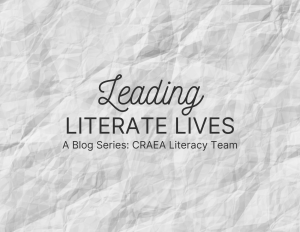Leading Literate Lives
Teaching children to read is ACTUALLY rocket science.
~Louisa Moats
When I was learning to read in the early ‘70s, I learned phonemic awareness and phonics skills: I sounded words out, clapped syllables, and filled in worksheets to match letters with pictures. When I began teaching in the mid-’90s, my instruction was based on Whole Language principles- give kids books and let them explore. The general consensus was reading will come naturally to kids holding books. My experiences on both ends of the reading instruction spectrum point to what we now call the “Reading Wars.”
Are we at war again? Some journalists have suggested that this war is imminent, but I have a much more optimistic view of our instructional future. We are not at war – we are simply aligning our instruction with the needs of our students as we teach them how to lead literate lives. We are also aligning with brain research that indicates exactly which areas of our brains are active when we read and write. Now that we know so much more, let’s simply lean into the practices that support our students and don’t wear us down.
Here’s what we know for sure…We need to teach word recognition and language comprehension skills in order for comprehension to occur. Our students must decode and encode words in order to understand the words in a text or piece of writing. Since reading must be taught (it is not a naturally occurring process), we must begin early and continue instruction until students’ skills are automatic.
We rely heavily on Dr. Hollis Scarborough’s “Reading Rope” to understand the attainment of fluent reading. In 2001 she depicted reading as an interweaving of the subskills students need to achieve skilled reading. There are eight components of Scarborough’s Reading Rope, which fall under two categories – Language Comprehension and Word Recognition.
We also understand the importance of phonological and phonemic awareness skills. Typically progressing readers gain these skills early in life, while our students with lagging literacy skills often need instruction and repeated practice to achieve mastery.
We know that vocabulary and reading comprehension are highly correlated. According to research, knowledge of individual word meanings accounts for as much as 50-60% of the variance in reading comprehension (Segers, Perfetti & Verhoeven, 2014). Louisa Moats says that, after learning to decode, vocabulary knowledge is the most important factor influencing comprehension.
What does all of this research mean? It means, as the famous Maya Angelou once said, that “…as we learn more – we do better.” As we learn from the experts in our field, we can continue to refine and improve our practices. Our students will lead literate lives if we teach explicitly and systematically using research-supported methods. We might consider a structured literacy approach that emphasizes highly explicit (teacher-led), systematic, and diagnostic instruction for all components of literacy with students in all grades (Spear-Swerling, 2019). We often hear that a structured literacy approach to teaching reading and writing is boring and doesn’t allow teachers to respond to students’ needs. Actually, the opposite is true. Teachers are artists and scientists. They know how to orchestrate the magic of making learning fun, exciting, AND explicit and systematic.
There is no need for conflict. We know what to do, and we are all in this together.
Stay tuned…this is the first blog in a series about Leading Literate Lives.
This post was authored by Teri Boezinger, CRAEA Consultant for Literacy
References
Spear-Swerling, L. (2019). Structured Literacy and Typical Literacy Practices: Understanding Differences to Create Instructional Opportunities. TEACHING Exceptional Children, 51(3), 201–211. https://doi.org/10.1177/0040059917750160
Segers, E., Perfetti, C. A., & Verhoeven, L. (2014). Foundations of language, literacy, and numeracy learning. International Journal of Disability, Development and Education, 61(3), 189-193.

